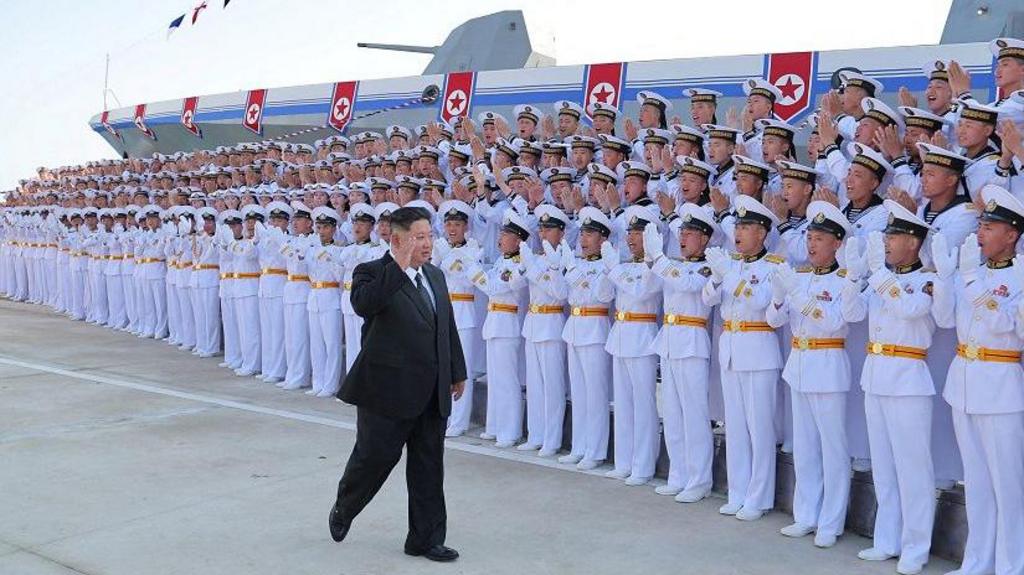The recent capsizing and subsequent relaunch of a North Korean warship has captivated global attention. News outlets extensively covered the incident, from its initial mishap to its successful refloating and relaunch last Friday.
This intense interest stems not from the relatively minor damage or lack of casualties, but from Kim Jong Un’s forceful response.
Kim swiftly condemned the failure as a “criminal act,” asserting it had damaged national “dignity.” He demanded immediate repairs and the punishment of those responsible, leading to the arrest of four party officials.
This sharp reaction and the rapid ship repair offer significant insight into the often enigmatic North Korean regime.
The incident underscores North Korea’s commitment to developing a nuclear-capable navy. Despite possessing a growing nuclear arsenal and a large army, its navy lags behind those of South Korea, Japan, and the United States.
“Kim Jong Un believes nuclear weapons are his nation’s only defense, yet its naval assets remain limited to an outdated submarine and small support vessels,” noted Choi Il, a retired South Korean navy captain.
Consequently, Kim has prioritized modernizing the navy, aiming for nuclear armament.
This warship represents a crucial step in that goal. One of two destroyers constructed in the past year (the first launched successfully in April), its 5,000-tonne displacement makes it North Korea’s largest warship, theoretically capable of launching nuclear short-range missiles.
According to Mr. Choi, now head of South Korea’s Submarine Research Institute, a destroyer of this class rarely capsizes during launch, highlighting the advanced technology involved. The incident was therefore “highly embarrassing” for Kim Jong Un, exposing “limitations in North Korean shipbuilding.”
The failure, witnessed by Kim, his daughter, and numerous spectators, compounded the embarrassment.
“North Korea prioritizes public displays. A planned series of demonstrations likely fueled Kim’s anger,” Mr. Choi added.
However, North Korean propaganda experts suggest Kim’s response extended beyond mere anger and humiliation.
Publicly acknowledging the incident represents a deliberate political strategy, marking a departure from the regime’s past tendency to conceal negative events.
Rachel Minyoung Lee of the Stimson Center, a long-time analyst of North Korean propaganda, explains this shift.
Previously, the regime suppressed negative information. However, increased information flow within North Korea makes concealing such incidents increasingly difficult.
“The leadership realized it’s more effective to address problems openly,” Ms. Lee stated. “Publicly acknowledging, assigning blame, and demonstrating accountability projects an image of effective governance.”
This strategy proved remarkably effective. Repairs were completed in just over three weeks, exceeding expectations.
“The swift relaunch demonstrates how failure can be strategically transformed into a political triumph,” remarked Kim Dong-yup, an assistant professor at the University of North Korean Studies in Seoul.
Experts suggest Kim employed this incident to bolster regime loyalty and ideology.
The capsizing, a complex maneuver, resulted from the bow becoming stuck. Instead of framing this as a technical failure, Kim blamed “absolute carelessness and irresponsibility.”
Conversely, he lauded a worker who died during construction, emphasizing his “blood and sweat.”
“His death became a symbol of devotion, reinforcing loyalty,” Professor Kim Dong-yup explained. This contrasts with the portrayal of previous leaders as infallible, demonstrating Kim Jong Un’s adaptability and narrative control.
Ms. Lee highlights North Korea’s unwavering determination.
“They’ve set a goal of a nuclear-armed navy and are demonstrably progressing toward it.”
The swift destroyer construction and repair surprised many, echoing the success of their nuclear and missile programs despite initial global skepticism.
Mr. Choi concurs: “While the episode might appear humorous, showing North Korea’s backwardness, significant progress is underway.”
Most concerning, experts say, is Kim Jong Un’s ambition to transform his navy from a coastal patrol force into a globally operating, pre-emptive nuclear strike capability.
“Vigilance and preparedness are paramount,” he concluded.
Additional reporting by Hosu Lee and Leehyun Choi.

